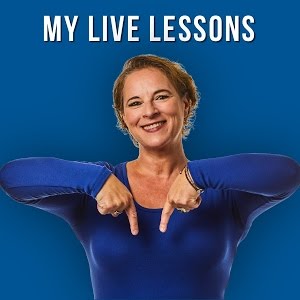Definition: The prefix pro means for or in place of.Pronouns stand in for or replace nouns. This lesson is about personal pronouns, which replace nouns that refer to people or things. Personal pronouns have: Number: They are singular or plural. Person: 1 st person is the person speaking, 2 nd person is the person being spoken to, and 3 rd person is the person being spoken about. Lesson 11 Resources: Download the Lesson 11 Video Companion Guide to follow along with Andy. Practice declining pronouns with this worksheet. Unit 3 Flashcards (review vocabulary with videos at the bottom of the page). Click here to return to Unit 3. Identify the forms and translate. 126) Reading exercise. 126-127) Translate. 127) Express all. Lessons 10-12 Semi-modal verbs Adjectives & Adverbs: Use, Form & Order. Relative Pronouns & Clauses Prepositions of Time, Place & Movement Had better - Would. Welcome to ESL Printables, the website where English Language teachers exchange resources: worksheets, lesson plans, activities, etc. Our collection is growing every day with the help of many teachers. If you want to download you have to send your own contributions. Relative pronouns.
 A negative Amplitude parameter value causes a 180-degree phase shift. You can generate a phase-shifted wave at other than 180 degrees in many ways. For example, you can connect a Clock block signal to a MATLAB Function block and write the equation for the specific wave. You can vary the output settings of the Signal Generator block while a simulation is in progress to determine quickly the. In time–frequency analysis, waveform signals are analyzed in both time and frequency domains to capture the progressive change of spectrum components with time (e.g., a transient or nonstationary signal such as music). Waveforms reveal a great deal about a signal. When there is a change in the height of the waveform, the voltage has changed and when there is a flat horizontal line you know that there has been no change for a period of time. Straight segments show a linear change, a rise or fall of voltage at a steady rate. Sharp waves indicate sudden change. 'Waveform's signal experts were very knowledgeable and helped me pick out the right antenna and I'm now getting double the download speed on my Verizon data card. I went from 1-2 bars of shaky signal to consistent four bars, and my download speeds have increased from a range of from 200 to 800 kbps. A Pulse is a waveform or signal in its own right. It has very different Mark-to-Space ratio compared to a high frequency square wave clock signal or even a rectangular waveform.
A negative Amplitude parameter value causes a 180-degree phase shift. You can generate a phase-shifted wave at other than 180 degrees in many ways. For example, you can connect a Clock block signal to a MATLAB Function block and write the equation for the specific wave. You can vary the output settings of the Signal Generator block while a simulation is in progress to determine quickly the. In time–frequency analysis, waveform signals are analyzed in both time and frequency domains to capture the progressive change of spectrum components with time (e.g., a transient or nonstationary signal such as music). Waveforms reveal a great deal about a signal. When there is a change in the height of the waveform, the voltage has changed and when there is a flat horizontal line you know that there has been no change for a period of time. Straight segments show a linear change, a rise or fall of voltage at a steady rate. Sharp waves indicate sudden change. 'Waveform's signal experts were very knowledgeable and helped me pick out the right antenna and I'm now getting double the download speed on my Verizon data card. I went from 1-2 bars of shaky signal to consistent four bars, and my download speeds have increased from a range of from 200 to 800 kbps. A Pulse is a waveform or signal in its own right. It has very different Mark-to-Space ratio compared to a high frequency square wave clock signal or even a rectangular waveform.
- 27relative Pronouns And Uncertaintysindarin Lessons Worksheets
- 27relative Pronouns And Uncertaintysindarin Lessons Learned
In the BrainPOP ELL movie Action! (L3U6L1), Ben and Moby make a movie about their school. The two are having so much fun reminiscing about their school days, that they don’t realize the mistake they’ve made. Diablo 2 editor jamella. What is it? Watch to find out, and be sure to listen for relative pronouns. In this lesson plan, adaptable for grades 3-8, students identify and practice using relative pronouns in listening, speaking, and writing activities.
Lesson Plan Common Core State Standards Alignments
Students will:
- Identify relative clauses in the movie.
- Describe pictures using relative pronouns.
- Connect sentences using relative pronouns.
Materials:
- Images of famous buildings, landmarks, people, inventions, etc.
Related, connected, describe
Multiple meaning word: relative
Preparation:
For Activity 2, Describe, the Picture
 , gather images of famous buildings, landmarks, people, inventions, etc. from magazines, online printouts, etc.
, gather images of famous buildings, landmarks, people, inventions, etc. from magazines, online printouts, etc.For Activity 3, Build a Sentence, prepare the Relative Pronouns Sentence Strips. Make enough copies for each pair of students. Print and cut out the strips, or have students cut them out. Or display them on the interactive white board for a whole group presentation.
For Activity 4, Hear It, Say It Cloze
27relative Pronouns And Uncertaintysindarin Lessons Worksheets
, print out the sentences below or write the sentences on the board for students to copy.- Push the button ________ is on the side of the camera.
- This is the place ________ you will be getting your education.
- This chair, ________ is way too small for me now, is ________ I used to sit.
- The gym is ________ we have physical education.
- The kids ________ play sports spend a lot of time here.

Lesson Procedure:
- It’s All Relative. Write the word relative on the board and invite students to brainstorm what this word makes them think of. Jot down their responses. Student may know that a relative is someone who is related to us, or part of our family. Explain that another meaning for related is connected. Explain that they are going to learn about relative pronouns, which are pronouns that connect parts of sentences.
Now write a few sentences on the board using relative pronouns. Underline the relative pronouns. Here are some examples:
Tom is the boy who always wears blue.
This is the book that I read last summer.
The morning is when I eat breakfast.
The gym is where we go to play basketball.
Read the first sentence aloud and ask students what the who refers to. What word is it related to? Ask about the underlined relative pronoun in each sentence. Then ask students why they think these words are called “relative pronouns.”
Watch the Relative Pronouns section of the Grammar movie in Action! (L3U6L1). Pause for students to add more or different examples to show their understanding. They can use the sentences in the Grammar movie as the basis for additional sentences. For example, instead of I know the girl who lives in this house, students might say, I know the girl who is standing over there. Or, students can create a sentence using the same relative pronoun, but a different noun. For example, I know a boy who has a dog like that. - Describe the Picture. Distribute pictures of famous buildings, landmarks, and people to teams of students. Taking turns within their teams, students choose a picture and describe it to the rest of the class using a relative pronoun. They do not show the picture to the class. Students on the other teams guess what the picture is. For example: This is a building that is famous in London. This is a soccer/football player who plays for Barcelona.
- Build a Sentence. Print and cut out the Relative Pronoun Sentence Strips. Distribute the sentence fragments and relative pronouns to pairs of students, small groups, or individuals. Challenge students to create sentences with the sentence fragments. For students who need extra support, provide the two clauses and have students fill in the missing relative pronoun. Use an interactive white board to conduct the activity with the whole class.
- Hear It, Say It Cloze. Use the Hear It, Say It feature for a cloze activity (see Preparation). Students complete the sentences with relative pronouns and then listen to check their answers. To differentiate and add more support, provide a list of the relative pronouns.
- Discuss It. Before watching the movie Action! (L3U6L1), have a class discussion about what it’s like to be a new student at school. Encourage students to share ideas about what might make them feel welcome at a new school. Tell them that in this movie, Ben and Moby are making a video for new students at their school. Ask students what they might include in a video about their school. After sharing ideas, watch the movie as a class.
EXTENSION ACTIVITY The children’s poem “The House that Jack Built” is perfect for teaching relative clauses because each line includes one in a repetitive language pattern. Make copies of the poem for the students and read it together. Pcgamesworld.net resident evil 4. Then ask students to read, or memorize and recite it for the class. They may choose to create a poster or book to go with it.
27relative Pronouns And Uncertaintysindarin Lessons Learned
